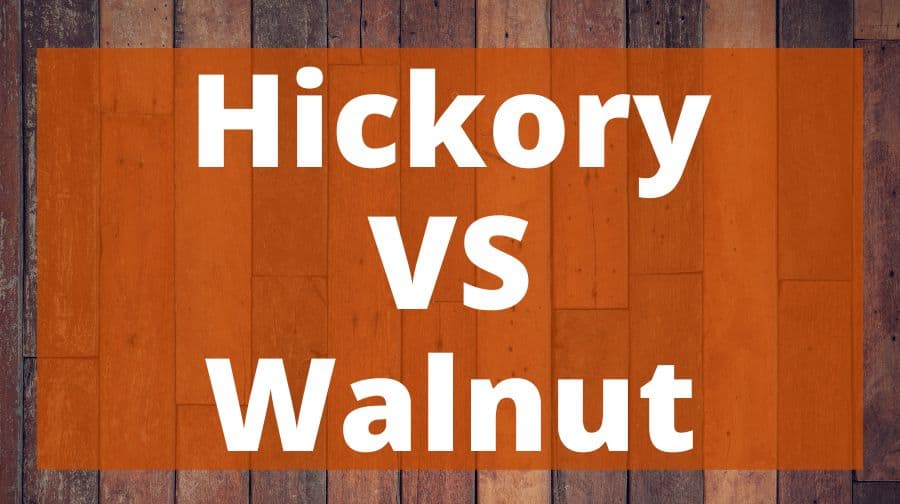
If you are considering using wood in a new home improvement project, you may be wondering which type of wood is the best option. Hickory and Walnut are both popular choices, but they have different characteristics that may make one better for your particular project.
In this blog post, we will discuss the pros and cons of Hickory vs Walnut so that you can make an informed decision about which one is right for you.
What Is Hickory Wood?
Hickory wood is a type of hardwood that is known for its strength and durability. It is often used in the construction of furniture, floors, and cabinetry. Hickory is also a popular choice for smoking meats, as it imparts a unique flavor to the food.
Hickory wood is available in a variety of colors, including light brown, dark brown, and reddish-brown. The wood has a coarse grain that is visible on the surface. Hickory is also a very strong wood, making it ideal for use in high-stress areas such as floors and furniture.
If you are looking for a sturdy and long-lasting wood, hickory is an excellent choice. This type of wood is sure to add beauty and value to your home.
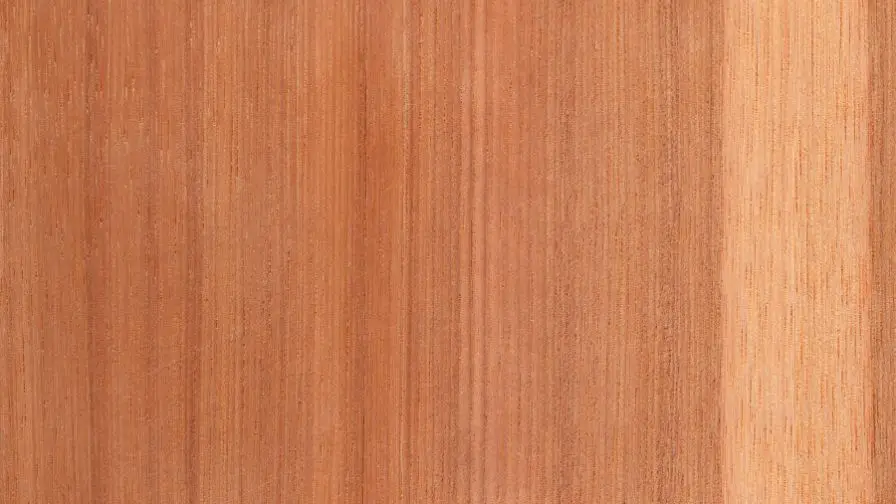
What Is Walnut Wood?
Walnut wood is a type of hardwood that is typically used in the construction of furniture and cabinets. It is also a popular choice for floors and paneling. Walnut wood has a dark brown color with a straight grain pattern.
Walnut wood is available in two main types: black walnut and walnut. Black walnut is the more expensive of the two types.
Walnut wood is available in two different grades. Grade A walnut wood is the highest quality and is typically used in high-end furniture. Grade B walnut wood is of lower quality and is often used in lower-priced furniture or for construction purposes.
Walnut wood is a hardwood that is strong and durable. It is also resistant to warping and twisting. It is easy to work with and takes stain well.
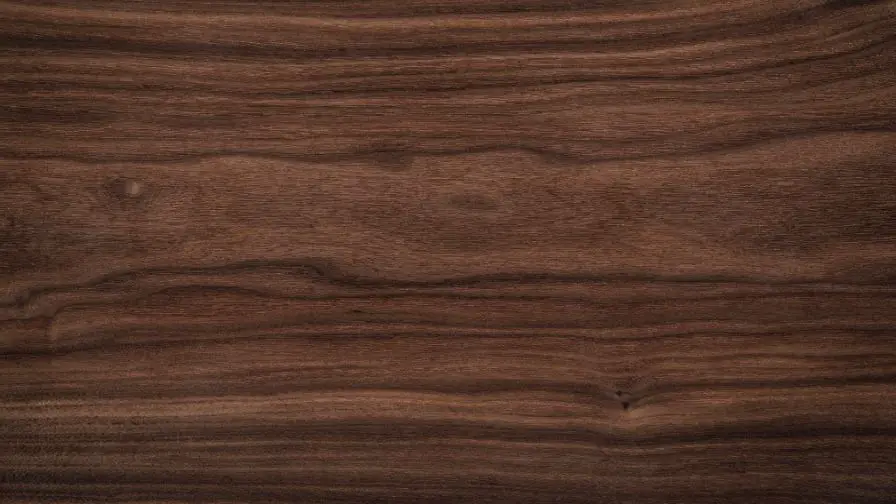
| CATEGORY | HICKORY WOOD | WALNUT WOOD |
| PRICE | The price of Hickory wood varies depending on the quality of the lumber and can range from $5.99-$7.99/board foot. You can order natural, high character and premium walnut boards. If you order in bulk you can get cheaper pricing. | The price of Walnut wood varies depending on the quality of the lumber and can range from $11.99-$20.99/board foot. You can order natural, high character and premium walnut boards. If you order in bulk you can get cheaper pricing. |
| JANKA HARDNESS | Hickory Janka Hardness score is 1880 | Walnut Janka Hardness score is 1010 |
| DURABILITY | Hickory’s durability comes from its density. Hickory ranks at the top of the list with a score of 1880. This means it can take a lot of wear and tear. | Walnut’s durability makes it ideal for furniture and cabinetry. |
| SPECIES | Hickory species is called Carya Glabra. Hickory is a very hard, tough and dense wood. It’s also one of the heaviest woods available, with a density of over 65lb/cu.ft. This makes it an extremely strong wood that’s resistant to wear and tear. | Walnut species is called Juglans and it belongs to the Juglandaceae family. |
| TREE SIZE | Hickory trees are generally taller than walnut trees. Hickory trees can grow up to 100 feet tall and has a diameter of about three feet, while walnut trees only grow to be about 20-60 feet tall. This is one of the main reasons why hickory wood is used for things like construction and furniture making, while walnut wood is more commonly used in cabinetry and flooring. | Walnut trees are generally smaller, averaging between 20 and 60 feet tall with a spread of 50-75 feet. Walnut tree leaves are larger, darker green, and have a rough texture. Walnut trees have a more rounded canopy. |
| LOCATION | Hickory trees are native to North America, and they’re also found in Central America and parts of Asia. | Walnut trees are native to the Mediterranean region but are also grown in other parts of the world including North America, Europe, and Asia. Walnut trees prefer a temperate climate with well-drained soil. |
| COLOR | Hickory wood is typically a light tan to reddish-brown color. Hickory blossoms are small, greenish-white flowers. The sapwood of hickory is white to light brown while the heartwood is a darker brown. | Walnut wood is typically a chocolate brown color with darker streaks running through it. Walnut wood may also have a slightly purple hue to it. Walnut, on the other hand, has a more consistent color. It is usually a dark chocolate brown but can also be found in lighter shades. Walnut blossoms are greenish-yellow. |
| GRAIN | Hickory wood grain is straight to slightly interlocked while walnut grain is more open and irregular. This makes hickory much harder to carve than walnut. Hickory also has a high shock resistance, which is why it’s often used for tool handles. Walnut, on the other hand, is easy to work with and takes stain very well, making it a popular choice for furniture and cabinetry. | Walnut wood grain is straight grained and pores are much larger and more spaced out. Walnut wood grain is more open with a looser feel and a rough texture. |
| END GRAIN | Hickory End Grain is ring-porous. This means that it’s made up of lots of small cells that run parallel to each other. The cell walls are thin and the cells are filled with air. This makes hickory very light and springy. | Walnut End Grain is smooth, with small, uniform pores arranged in a spiral pattern. Walnut on the other hand is a softer more open grained wood that will show knife marks more readily. Walnut also has a limited range of colors and grain patterns. |
| ROT RESISTANCE | Hickory’s rot resistance is good when it comes to construction material. This tree was used in the construction of early American homes and barns, many of which are still standing today. Insects can cause some problems with hickory trees, but the wood is still very strong and durable. | Walnut’s rot resistance is due to the chemical properties of juglone and its low density. Walnut is a relatively soft wood, and its low density makes it more difficult for decay-causing fungi to penetrate the wood. |
| SUSTAINABILITY | Hickory trees can be harvested after reach maturity at around 20 years. Walnut trees take double the time to mature and reach peak production. This makes hickory a more sustainable. | Walnut trees can be harvested after reaching maturity between 40-60 years old. It is not as sustainable because it is a less common resource and takes longer to grow. |
| USES | Hickory wood can be used for furniture, flooring, baseball bats, sporting goods, ladders and smoking meats. It’s also a popular wood for use in tool handles because of its shock-resistant properties. | Walnut wood can be used for furniture, cabinetry, gunstocks, veneers, interior paneling, cutting boards, marquetry inlays, checkboards, flooring, millwork, desks, dining tables and butcher blocks. |
| RELATED SPECIES | Hickory has about 18 different species in the world. The tree is native to North America and some parts of Europe and Asia. Here are some examples Bitternut Hickory (Carya cordiformis) Mockernut Hickory (Carya tomentosa) Nutmeg Hickory (Carya myristiciformis) Pecan (Carya illinoinensis). | Walnut related species are found mostly in the southern hemisphere but some grow in the northern hemisphere as well. There are about 30 related species of walnut including black walnut, butternut, and heartnut. walnuts are evergreen. |
HICKORY VS WALNUT: PROS & CONS
| HICKORY | WALNUT | |
| PROS | The pros of Hickory wood are that it is very strong, durable, affordable and bountiful. Hickory is also a beautiful wood with a lot of character. | The pros of Walnut wood are that it is very strong and durable. Walnut is also a popular choice for furniture because it has a beautiful grain pattern. Walnut can be stained or painted to match any decor. |
| CONS | The cons of Hickory are that it can be difficult to work with and it is susceptible to insect damage. | The cons of Walnut are that it is susceptible to scratches and dents. Walnut is also a bit more expensive than some other types of wood. |
What Are The Differences Between Hickory vs Walnut?
Here are the differences between Hickory and Walnut.
When it comes to hardness, hickory is in a league of its own. It’s about twice as hard as oak, which is one of the most popular choices for woodworking projects. Hickory is also very strong and dense. This makes it a great choice for things like flooring, furniture, and cabinetry. It’s also a popular choice for baseball bats and other sports equipment.
Walnut, on the other hand, is a softer wood. It’s not as strong or dense as hickory, but it does have a beautiful grain pattern. Walnut is a popular choice for woodworking projects like carving, furniture, and cabinetry. It’s also a popular choice for gun stocks and musical instruments.
Hickory is best for:
-Drawer fronts
-Doors
-Cabinets
-Furniture
-Tool handles
Hickory wood is a very strong and durable hardwood, making it an ideal choice for high traffic areas or rooms where there is a lot of wear and tear. It is also a good choice for those who have allergies or sensitivities to certain woods, as hickory is a non-toxic wood.
Hickory is also a good choice for those who are looking for a more natural look in their home. The wood has a beautiful grain pattern and can be stained or left unfinished.
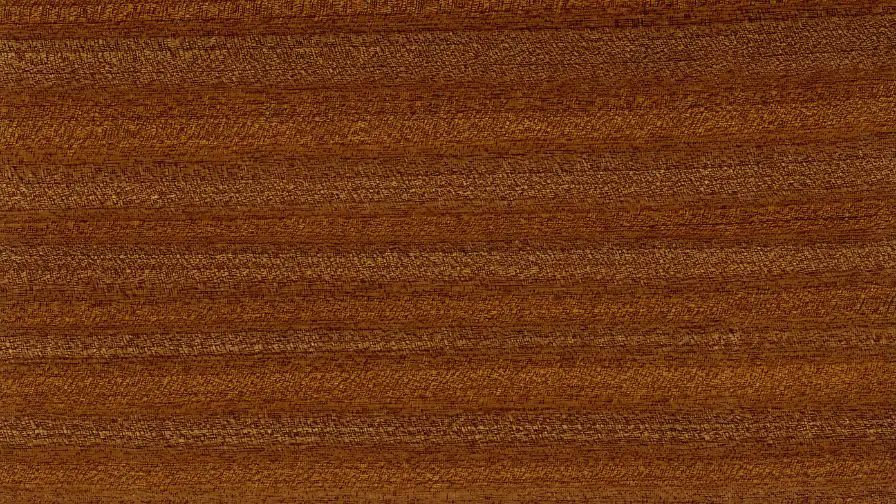
Walnut Wood Is Best For:
-Making high-quality furniture
-Creating beautiful floors
-Constructing cabinets and other storage solutions
If you’re looking for a wood that will give your home a luxurious look and feel, then walnut is the way to go. This type of wood is often used in high-end furniture and flooring, as it has a rich, dark color that really makes a statement.
It’s also perfect for constructing cabinets and other storage solutions, as it is both strong and stylish. So if you’re looking to add a touch of luxury to your home, then walnut wood is the way to go.
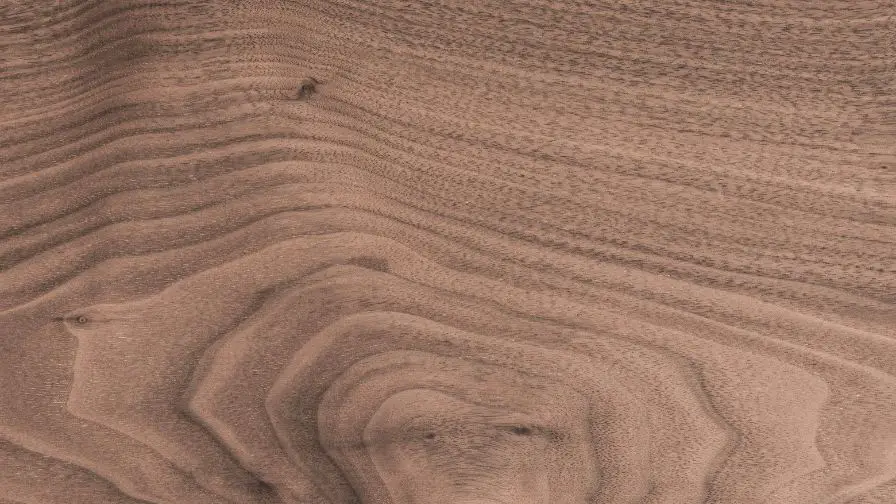
Is Walnut The Same As Hickory?
No, walnut is not the same as hickory. Although both are hardwoods, they have different characteristics. Walnut is a softer wood, while hickory is much harder. Hickory also has a more pronounced grain than walnut.
Do Hickory Nuts Taste Like Walnuts?
Hickory nuts can taste like Walnuts with a similar nutty flavor, but hickory nuts are more savory while walnuts are more sweet. Also there a many types of hickory nuts such as the pignut, bitternut, mockernut, shagbark, and the shellbark. Each type of hickory nut has its own unique flavor that can range from sweet to bitter.
Some say that Hickory nuts taste like a cross between a walnut and a pecan, while others say they taste more like a chestnut. Hickory nuts are high in fat and protein, and are a good source of vitamins and minerals. They can be eaten raw, roasted, or ground into a flour to use in baking.
If you’re looking for a hickory nut that tastes like a walnut, you might want to try the American hickory nut. These nuts are small and have a similar flavor profile to English walnuts.
How Do You Identify Hickory?
You can identify Hickory by its unique leaves. The leaves of Hickory are pointy and have a V-shaped notch at the end. The bark is also very distinctive, being light brown or grey in color and having a rough, shaggy texture.
Hickory Wood Is Tough Stuff
Subscribe to Jay Bates 2 – Vlog and Non Project Videos on YouTube



